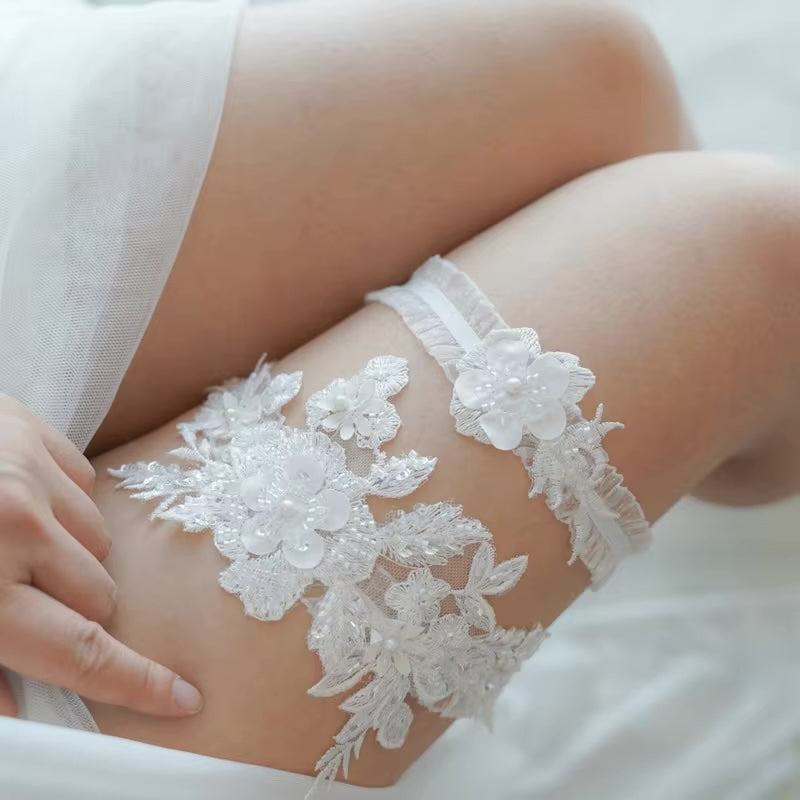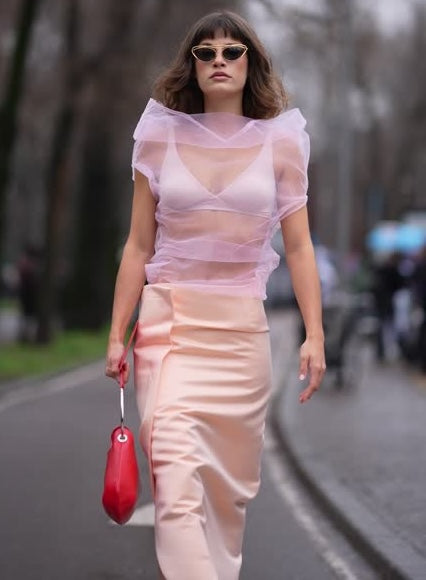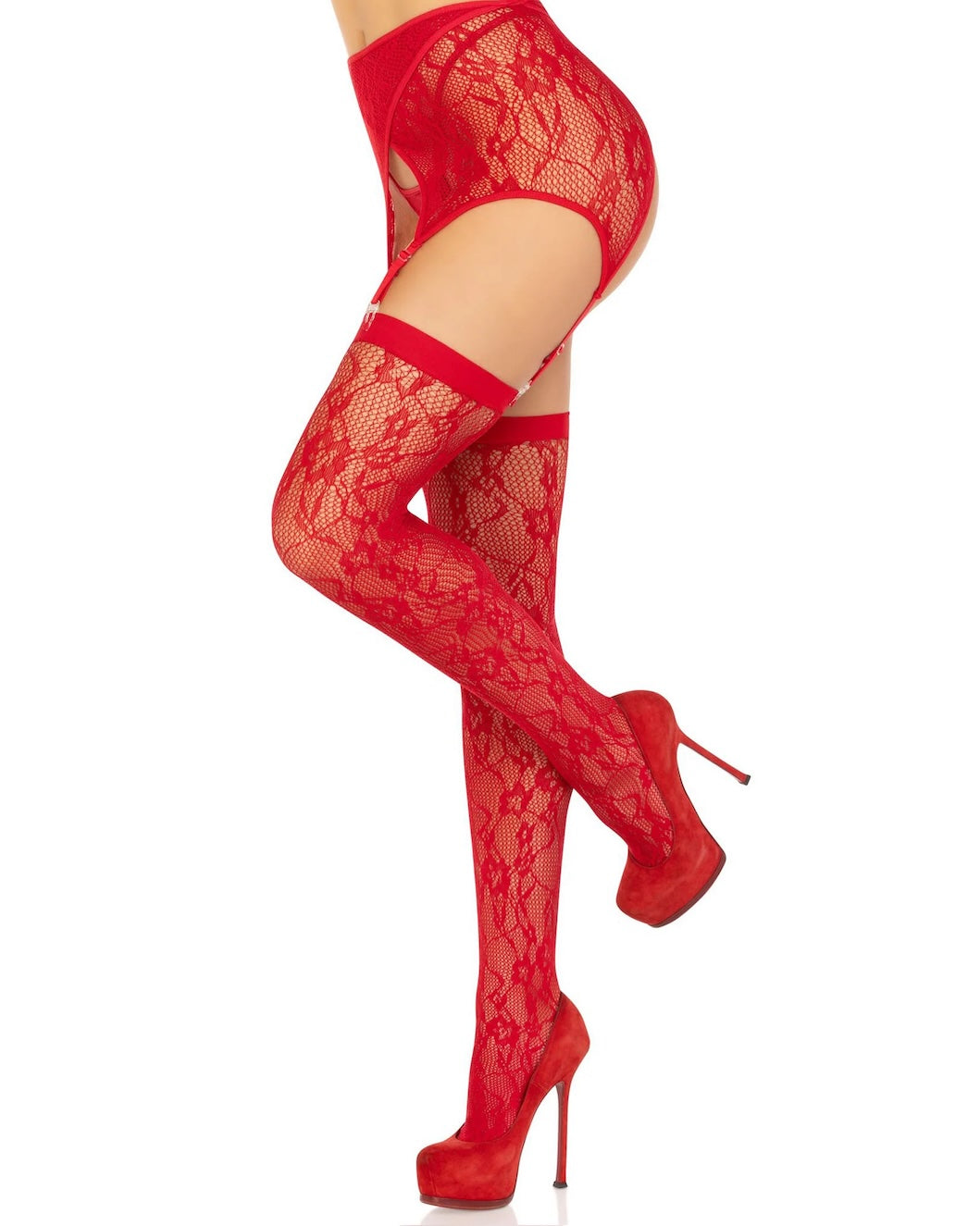Why Do Brides Wear Garters? Exploring the History

Why Do Brides Wear Garters? Exploring the History and Meaning of a Timeless Tradition
The wedding garter is one of the most iconic symbols of bridal attire, steeped in tradition and significance. While today it is often associated with fun and playful moments during a wedding reception, the garter has a rich history that dates back centuries. If you’re wondering about the origins of the wedding garter tradition or whether it’s necessary to include it in your celebration, you’re not alone.
From its origins as a talisman of good luck to its modern role in wedding festivities, the bridal garter remains a fascinating and meaningful accessory. In this blog, we delve into the history, symbolism, and evolving role of the wedding garter, offering insights into why brides continue to embrace this enduring tradition.
The Historical Origins of the Wedding Garter
The practice of wearing a garter can be traced back to the dark ages and middle ages, marking the wedding garter tradition origin in medieval Europe. During this period, weddings were considered a communal celebration, and the bride’s attire was believed to hold special powers of good fortune.
Guests would often clamor to take a piece of the bride's dress, stocking, or other piece of the bride's clothing as a token of luck, leading to the chaotic and sometimes invasive tradition of tearing at her dress.
To counteract this, brides began wearing a garter, a small, easily removable item, worn around the mid-thigh as a designated symbol of good luck. The garter could be tossed or handed to guests, and the act of throwing the garter became a less invasive alternative to tearing at the bride's dress.
In some traditions, the newly married couple would be escorted by guests to the bridal chamber or even the marital bed as part of the celebration.
Married couples also participated in customs involving stockings, such as games like Fling the Stocking, which were believed to bring good luck. Over time, the garter became a ceremonial accessory, evolving into the refined and decorative piece we know today.
Symbolism of the Bridal Garter
The wedding garter tradition holds a wealth of symbolism, much of which has changed over the centuries. Some of the key meanings associated with the garter include:
Fertility and Prosperity:
Historically, the garter was thought to bestow blessings of fertility and abundance upon the newlyweds. This belief was rooted in medieval customs, where elements of the bride’s attire were seen as conduits of good fortune.
Transition to Marriage:
The removal of the garter symbolized the bride’s transition from maidenhood to married life. It was often viewed as a private or intimate moment, reflecting the couple’s new union.
Good Luck Charm:
Sharing the bride's garter with guests became a way to spread good luck. In the wedding garter toss, the bride's garter is thrown to a group of single men as a playful gesture. This aspect of the wedding garter tradition endures today, with many couples choosing to personalize or even skip the ritual to suit their preferences.
Wedding Garter and Wedding Dress
The wedding garter is a cherished piece of bridal lingerie that many brides choose to wear beneath their wedding dress on the big day. Traditionally crafted from delicate lace, soft elastic, or other comfortable fabrics, the wedding garter is designed to fit snugly around the upper thigh, making it both a practical and beautiful accessory. For many brides, slipping on a wedding garter is a way to honor a time honored tradition, while others see it as a sentimental or stylish addition to their bridal look.
The garter often complements the wedding dress, adding a subtle touch of romance and elegance that only the bride knows about until the big reveal. Some brides even incorporate their wedding garter into the “something old, something new, something borrowed, something blue” tradition, choosing a garter with a blue ribbon or detail to fulfill the “something blue” element. Whether chosen for tradition, fashion, or a bit of both, the wedding garter remains a beloved part of the bridal ensemble.
How Brides Wear a Garter
When it comes to wearing a wedding garter, there are no strict rules, brides can decide which leg feels most comfortable. While most brides wear their garter on the right leg, just above the knee, the choice is entirely personal. This placement is popular because it helps prevent the garter from rubbing or slipping while walking or dancing during the wedding day festivities.
Some brides opt to wear two garters: one to keep as a special memento and another to be tossed during the garter toss tradition. This way, the bride can participate in the fun of the toss tradition without parting with her keepsake. Ultimately, how a bride chooses to wear her wedding garter is all about comfort, confidence, and personal preference, ensuring she feels her best as she celebrates her big day.
The Modern Role of the Garter in Weddings
In modern weddings, the wedding garter is primarily a decorative accessory and a fun element of the wedding celebration. While its historical symbolism has faded for some, many couples still incorporate the garter into their wedding day for its playful and nostalgic appeal.
However, wedding traditions and other longstanding traditions are increasingly being adapted or skipped by couples who want their celebration to reflect their unique style and values. One idea is for couples to personalize or even replace the garter tradition with something that feels more meaningful or comfortable for them.
The Garter Toss Tradition
One of the most popular modern practices involving the garter is the garter toss. During the reception, the bride sits in a chair while the groom removes the garter, often in a humorous or theatrical fashion and then throws it to a crowd of single male guests or bachelors. This tradition mirrors the bouquet toss for single female guests, with both customs symbolizing the passing of good fortune to those hoping to marry next.
Personalized and Stylish Garters
In recent years, garters have become highly personalized, with brides choosing designs that reflect their individual style and wedding theme. From intricate lace and satin to garters adorned with charms or monograms, modern garters are as unique as the brides who wear them. Some brides even opt for two garters: one to keep as a memento and another to toss during the reception.
The Role of Wedding Garter in Wedding Ceremonies
The wedding garter takes center stage during the wedding reception, especially when it comes time for the garter toss tradition. In this lively custom, the groom removes the garter from the bride’s leg, often to the delight and laughter of wedding guests and tosses it to a group of unmarried male guests, usually friends or family members. The lucky man who catches the garter is said to be the next to marry, echoing the bouquet toss tradition for single women.
This playful ritual adds a sense of fun and excitement to the celebration, encouraging guests to join in the festivities and creating memorable moments on the dance floor. In some weddings, the garter toss is paired with the bouquet toss, making for a double dose of tradition and good luck. The wedding garter can also be woven into other customs, such as the “something blue” tradition, making it a versatile and meaningful part of many wedding ceremonies.
Why Brides Still Wear Garters Today
Despite its ancient origins, the wedding garter remains a beloved tradition for several reasons:
Honoring Tradition: Many brides wear a garter to pay homage to the history and customs of marriage, embracing its role as a symbol of good luck and celebration.
Adding a Playful Element: The garter toss adds an element of fun and lightheartedness to the wedding festivities, creating memorable moments for the couple and their guests.
Creating a Keepsake: For many brides, the garter serves as a cherished keepsake, a tangible reminder of their special day.
Expressing Personal Style: With endless design options, the garter allows brides to showcase their personality and incorporate a touch of elegance or whimsy into their attire.
A wedding planner can also help couples decide whether to include or skip the garter tradition and ensure their preferences are clearly communicated to all vendors.
Lasting Impressions of Wedding Garters
The wedding garter often becomes a treasured keepsake for many brides, serving as a lasting reminder of their wedding day and the promises made. Some brides choose to preserve their wedding garter as a family heirloom, passing it down to future generations as a symbol of love and tradition. The act of tossing the garter to unmarried male guests is believed to bring good luck, and the garter itself can be seen as a token of fortune and happiness.
For some, the wedding garter is made even more meaningful by incorporating fabric or lace from a loved one’s wedding dress, creating a beautiful connection between generations. Whether kept as a memento, shared with family, or remembered for the laughter it brought to the wedding guests, the wedding garter leaves a lasting impression that endures long after the celebration ends.
Conclusion
The wedding garter is more than just a decorative accessory, it is a symbol of tradition, love, and celebration that has stood the test of time. Whether chosen for its historical significance, its role in creating joyful memories, or its potential as a cherished keepsake, the garter continues to hold a special place in bridal fashion and wedding customs. By wearing a garter, today's brides honor a timeless tradition while making it uniquely their own.


